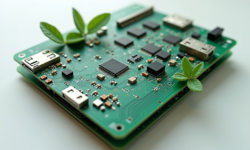Alaris System Maintenance Software ⏬⏬
Alaris System Maintenance Software serves as a comprehensive solution for effectively managing and optimizing the performance of Alaris infusion pumps and other medical devices. This advanced software offers healthcare professionals a centralized platform to monitor and maintain the functionality of their equipment, ensuring uninterrupted patient care and enhancing overall operational efficiency. With its user-friendly interface and robust features, Alaris System Maintenance Software empowers medical personnel to proactively address maintenance needs, streamline workflows, and minimize downtime, ultimately contributing to enhanced patient safety and clinical excellence.
Alaris System Maintenance Software
The Alaris System Maintenance Software is a powerful tool designed to enhance the performance and reliability of the Alaris infusion system. This software plays a crucial role in ensuring the smooth functioning of the infusion pumps, which are widely used in healthcare settings.
With the Alaris System Maintenance Software, healthcare professionals can efficiently manage and maintain the Alaris infusion system. It provides various features and capabilities that aid in system configuration, monitoring, and troubleshooting.
One key feature of the software is its ability to facilitate remote management of the infusion system. This allows healthcare providers to access and control the system from a central location, reducing the need for physical intervention at each individual pump. Remote management enhances operational efficiency and saves valuable time for healthcare personnel.
Furthermore, the Alaris System Maintenance Software offers comprehensive reporting and analytics capabilities. It collects data from the infusion pumps, allowing healthcare providers to analyze performance trends, identify potential issues, and make informed decisions regarding system maintenance and optimization.
Another major benefit of this software is its ability to streamline the process of updating and configuring infusion pump parameters. Through a centralized interface, healthcare professionals can easily modify and customize various settings, such as drug libraries, alarm thresholds, and dosing protocols. These features contribute to medication safety and ensure accurate delivery of fluids and medications to patients.
Alaris Software: Streamlining Workflow Efficiency
The Alaris software is a cutting-edge solution designed to streamline workflow efficiency and enhance productivity for businesses across various industries. Developed by Kodak Alaris, the software offers a comprehensive set of tools and features to optimize document management processes.
One of the key highlights of the Alaris software is its ability to automate repetitive tasks, such as data entry and document sorting. By leveraging advanced technologies like artificial intelligence and machine learning, the software can intelligently extract relevant information from documents, classify them, and route them to the appropriate destinations.
The software’s intuitive user interface simplifies navigation and allows users to easily access and manage their digital files. It provides a centralized hub for storing, organizing, and retrieving documents in various formats, including PDFs, images, and more. With powerful search capabilities, users can quickly locate specific files, saving valuable time and effort.
Furthermore, the Alaris software offers robust security features to protect sensitive data. It ensures compliance with industry standards and regulations by implementing encryption, access controls, and audit trails. This helps businesses maintain confidentiality, integrity, and availability of their critical information.
Businesses that implement the Alaris software can experience a range of benefits. Improved operational efficiency leads to reduced costs and increased productivity. Manual errors are minimized, resulting in enhanced accuracy. The software also enables seamless collaboration among team members, facilitating better communication and faster decision-making.
System Maintenance Software
System maintenance software refers to a type of computer program designed to optimize and enhance the performance of computer systems. It enables users to manage, monitor, and maintain their systems efficiently.
One important function of system maintenance software is to perform regular scans and checks for errors or issues within the system. This includes tasks such as disk cleanup, registry cleaning, and removal of unnecessary files or programs. By identifying and resolving these issues, the software helps improve system stability and speed.
Another key feature of system maintenance software is its ability to update and manage software applications and drivers. It ensures that the operating system and other software components are up-to-date, minimizing vulnerabilities and enhancing compatibility.
Moreover, system maintenance software often provides tools for monitoring system health and performance. It can present detailed information about CPU usage, memory utilization, and network activity, allowing users to identify resource-intensive processes and troubleshoot any potential bottlenecks.
Additionally, some system maintenance software may offer advanced features like data backup and recovery options. This helps users safeguard their important files and restore them in case of accidental deletion, system failure, or other unforeseen events.
Alaris Maintenance Software
The Alaris Maintenance Software is a comprehensive solution designed to streamline and optimize maintenance operations for businesses across various industries. It offers a range of features and functionalities that help organizations effectively manage their equipment, assets, and facilities.
With Alaris Maintenance Software, businesses can create and maintain a centralized database of all their assets, including machinery, equipment, vehicles, and infrastructure. This allows for easy tracking of maintenance schedules, repair history, and associated costs.
The software provides a user-friendly interface that enables technicians and maintenance personnel to efficiently schedule and prioritize tasks. It also facilitates the creation of preventive maintenance plans, ensuring that regular inspections and servicing are conducted to prevent breakdowns and minimize downtime.
One of the key benefits of Alaris Maintenance Software is its ability to generate insightful reports and analytics. Users can access real-time data on asset performance, maintenance activities, and resource utilization, allowing them to make data-driven decisions and optimize their maintenance strategies.
In addition, the software supports integration with other systems such as enterprise resource planning (ERP) software, enabling seamless data exchange and enhancing overall operational efficiency.
Overall, the Alaris Maintenance Software offers businesses a powerful tool to improve their maintenance practices, reduce costs, and increase equipment reliability. By adopting this software, organizations can enhance their productivity, extend the lifespan of their assets, and ultimately achieve higher customer satisfaction.
Software Maintenance Tools
Software maintenance tools play a crucial role in managing and enhancing software systems throughout their lifecycle. These tools assist developers and IT professionals in effectively maintaining, updating, and improving software applications. Here are some key points about software maintenance tools:
- Version Control Systems (VCS): VCS tools like Git and Subversion help track changes made to source code over time, enabling developers to collaborate, revert to previous versions, and manage different branches of development.
- Issue Tracking Systems: Issue tracking tools such as Jira and Bugzilla provide a centralized platform to report, track, and prioritize software issues and bugs. They enable efficient communication and collaboration among team members.
- Code Review Tools: Code review tools like Crucible and Gerrit facilitate the systematic examination of source code by peers, ensuring code quality, identifying potential issues, and promoting best practices within the development team.
- Automated Testing Tools: Automated testing frameworks such as Selenium and JUnit help automate the execution of software tests, allowing for faster and more reliable detection of bugs, regressions, and performance issues.
- Code Analysis Tools: Code analysis tools like SonarQube and ESLint analyze source code for potential vulnerabilities, coding standards violations, and performance bottlenecks, enabling developers to improve code quality and maintainability.
- Dependency Management Tools: Dependency management tools like Maven and npm assist in managing libraries and external dependencies within a software project. They ensure proper versioning, conflict resolution, and efficient distribution of dependencies.
By leveraging these software maintenance tools, development teams can streamline their workflows, detect and resolve issues more effectively, and ensure the long-term stability and maintainability of software systems.
Maintenance Software Solutions
Maintenance software solutions are essential tools used by businesses and organizations to streamline and optimize their maintenance operations. These software applications are designed to assist in managing and tracking various aspects of maintenance activities, such as equipment repairs, preventive maintenance tasks, work orders, inventory management, and asset tracking.
One key benefit of maintenance software solutions is the ability to schedule and automate maintenance tasks. By setting up recurring maintenance schedules, organizations can ensure that equipment and facilities receive regular inspections, servicing, and repairs. This proactive approach helps prevent downtime, extend the lifespan of assets, and reduce overall maintenance costs.
Maintenance software solutions typically offer features like work order management, where users can create, assign, and track work orders for specific maintenance tasks. These tasks can range from routine inspections to troubleshooting and repairs. With centralized work order management, teams can efficiently coordinate their efforts, prioritize tasks, and monitor progress to ensure timely completion.
Asset management is another crucial aspect of maintenance software solutions. Organizations can utilize these tools to maintain an accurate inventory of their assets, including equipment, machinery, vehicles, and spare parts. Asset tracking functionalities enable businesses to monitor the performance, usage, and maintenance history of each asset, facilitating informed decision-making regarding replacement, upgrades, or repairs.
In addition to work order and asset management, maintenance software solutions often provide reporting and analytics capabilities. These features allow users to generate comprehensive reports on maintenance activities, resource utilization, downtime analysis, and more. By analyzing these reports, organizations can identify trends, evaluate performance, and make data-driven decisions to improve their maintenance processes.
Overall, maintenance software solutions play a vital role in enhancing efficiency, reducing costs, and ensuring optimal functioning of equipment and facilities. By leveraging these tools, businesses can streamline their maintenance operations, minimize unplanned downtime, and optimize resource utilization, ultimately leading to improved productivity and customer satisfaction.
System Maintenance Programs
System maintenance programs are essential software tools used to keep computer systems running smoothly and optimize their performance. These programs help ensure the stability, security, and reliability of a system by performing various tasks.
One key task performed by system maintenance programs is disk cleanup. They remove unnecessary files and temporary data, freeing up storage space and improving overall system performance. This process helps prevent disk fragmentation and keeps the system responsive.
Another crucial aspect of system maintenance programs is malware protection. They include antivirus and antimalware features to detect and eliminate malicious software that can harm the system or compromise data security. Regular scans and real-time protection safeguard against viruses, spyware, ransomware, and other threats.
Moreover, these programs often offer system optimization features like registry cleaning and defragmentation. They scan and repair potential errors in the Windows registry, which can improve system stability and speed. Defragmentation reorganizes fragmented files on the hard drive, enhancing data access and reducing file access times.
Furthermore, system maintenance programs typically include backup and recovery tools. They allow users to create backups of important files and folders, providing a safety net in case of accidental deletion, hardware failure, or system crashes. The recovery options enable users to restore their systems to a previous state quickly.
Alaris System Management Software
The Alaris System Management Software is a comprehensive solution designed for managing and controlling the Alaris infusion pumps and related devices. This software offers healthcare professionals advanced tools to streamline workflow, enhance patient safety, and improve overall efficiency in clinical settings.
With the Alaris System Management Software, medical facilities can centrally manage and monitor a network of infusion pumps, ensuring consistent drug delivery and reducing the risk of errors. The software enables seamless integration with electronic health records (EHR) systems, allowing for accurate documentation and automated data transfer.
The software provides real-time visibility into pump status, alerts, and alarms, enabling prompt response to critical events or potential issues. It allows for remote adjustments of pump parameters, such as flow rates and dosing limits, ensuring personalized care for each patient. Additionally, comprehensive reports and analytics help institutions identify trends, assess performance, and optimize resource allocation.
Key features of the Alaris System Management Software include:
- Centralized pump management system
- Integration with EHR systems
- Real-time monitoring and alerts
- Remote adjustment of pump parameters
- Data analysis and reporting capabilities
Alaris Device Management Software
The Alaris Device Management Software is a powerful tool designed for managing and maintaining Alaris infusion devices in healthcare settings. This software provides healthcare professionals with the ability to efficiently monitor and control multiple infusion pumps from a centralized location, enhancing patient safety and workflow efficiency.
With the Alaris Device Management Software, healthcare providers can easily configure and customize infusion settings, create and manage drug libraries, and track infusion data for individual patients. The software enables remote access to infusion devices, allowing for real-time monitoring and adjustments, which helps ensure accurate and timely delivery of medications.
One of the key features of the Alaris Device Management Software is its comprehensive reporting capabilities. Healthcare professionals can generate detailed reports on infusion history, alarms, and system performance, enabling them to analyze trends, identify potential issues, and make informed decisions regarding patient care.
The software also offers intuitive dashboards and alerts, which provide visual representations of infusion status and important notifications. This helps healthcare providers stay well-informed and promptly respond to any critical situations that may arise during the infusion process.
In addition to its operational benefits, the Alaris Device Management Software is designed with security in mind. It incorporates robust authentication protocols and encryption measures to safeguard patient data and ensure compliance with privacy regulations.
Overall, the Alaris Device Management Software serves as a valuable tool for healthcare professionals, simplifying the management of infusion devices, enhancing patient safety, and improving workflow efficiency in clinical settings.
Maintenance Software for Alaris Systems
Alaris systems, a leading provider of medical devices and solutions, rely on maintenance software to ensure the optimal performance and reliability of their equipment. This software plays a crucial role in streamlining maintenance operations and maximizing the lifespan of Alaris systems.
The maintenance software designed for Alaris systems offers a range of features and functionalities that aid in efficient equipment upkeep. One of the key components is a comprehensive asset management system, which allows users to track and monitor the status of individual devices within their network. This includes information such as installation dates, maintenance schedules, and repair history.
In addition, the software enables proactive maintenance by generating automated alerts and notifications. These alerts can be configured based on predefined thresholds or specific parameters, ensuring that potential issues are detected early on. By addressing problems before they escalate, Alaris systems can minimize downtime and optimize equipment utilization.
The maintenance software also facilitates the planning and execution of preventive maintenance tasks. Users can schedule routine inspections, calibration, and servicing activities using the software’s intuitive interface. This helps in reducing the risk of unexpected failures and extending the lifespan of Alaris systems.
Furthermore, the software provides access to a centralized database of technical documentation, including manuals, troubleshooting guides, and service bulletins. This resource empowers maintenance personnel with the necessary information to diagnose and resolve issues efficiently.
Overall, the maintenance software for Alaris systems plays a vital role in ensuring the smooth operation and longevity of their medical devices. By leveraging advanced features such as asset management, proactive alerts, and preventive maintenance planning, healthcare facilities can optimize their maintenance efforts, enhance equipment performance, and deliver quality patient care.



